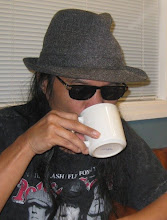RECOMMENDED. <>Movie: “Dog Day Afternoon.” <>Book/Poetry. “Federico Garcia Lorca: The Collected Poems: A Bilingual Edition.”
“Dog Day Afternoon,” a 1975 biographical crime drama film directed by Sidney Lumet, and stars Al Pacino. This is more dark comedy than crime drama though. Based on the Life magazine article "The Boys in the Bank" by P. F. Kluge and Thomas Moore, the movie chronicles the 1972 failed robbery and hostage situation led by John Wojtowicz and Salvatore Naturile at a Chase Manhattan branch in Brooklyn.
As Sonny Wortzik (based on John Wojtowicz), this is Al Pacino’s best performance, regardless of 1992’s “Scent of a Woman.” And “Dog Day…” has the best dialogues ever. Example: Sonny: “Is there any special country you wanna go to?” / Sal (John Cazale): “Wyoming.” / Sonny: “Sal, Wyoming's not a country.”
Plus, of course, Sonny yelling “Attica! Attica! Attica!” in reference to the Attica (upstate New York) Prison Riot in 1971. The rebellion resulted in the highest number of fatalities in the history of United States prison uprisings, 43 fatalities. The tragic event has been described as a historical event in prisoners' rights movement.
In 2009, “Dog Day Afternoon” was deemed "culturally, historically, or aesthetically significant" by the Library of Congress, and was selected for preservation in the National Film Registry. There’s no dull moment in the movie. Everybody’s having fun. And Chris Sarandon delivered the most compelling gay character internalization ever. Less talk, less screen-time but “loud.”
Weekend fun movie watch with friends? “Dog Day Afternoon” is very much recommended. “Attica! Attica! Attica!” 🎬🎭🎬
Book/Poetry. “Federico Garcia Lorca: The Collected Poems: A Bilingual Edition.” An ambitious collection across many years of the poetic works of the Spanish poet. Senor Lorca or Federico del Sagrado Corazón de Jesús García Lorca (1898 – 1936) achieved international recognition as an emblematic member of the Generation of '27, a group consisting mostly of poets who introduced the tenets of European movements (such as symbolism, futurism, and surrealism) into Spanish literature.
Definitely and absolutely, Lorca is the most powerful influence in my poetry. Beyond his “Cogida and Death” and “Llanto por Ignacio Sanchez Mejias” or “Lament for Ignacio Sanchez Mejias,” his works are virtual jewels: “Ballad of the Moon,” “Before the Dawn,” “City That Does Not Sleep,” “Death of Antoñito El Camborio.” You may want to read the original Spanish versions and read them aloud, for pleasure of the musicality of words. Especially the gacelas and casidas from “Divan del Tamarit,” 1936.
In case you’d venture to dig up more of Lorca’s work, start with 1928’s “Romancero gitano,” depicting life in his native Andalusia. My most favorite, and which I can easily relate in re my life in New York City and America per se, is “Poeta en Nueva York,” 1942.
Federico García Lorca was assassinated by Nationalist forces at the beginning of the Spanish Civil War (1936-1939). 📚✍️📚




0 Comments:
Post a Comment
<< Home